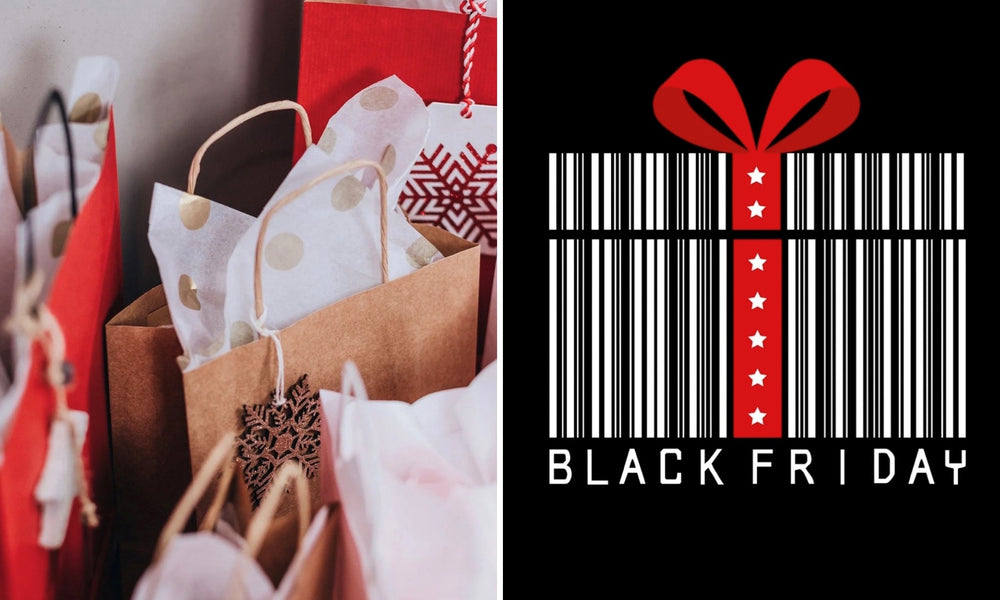Black Friday, a cultural phenomenon synonymous with the start of the holiday shopping season, emerges annually as a vibrant tapestry of consumer enthusiasm and retail excitement. Originating in the United States, this day-after-Thanksgiving tradition has evolved into a global extravaganza, marking a day when retailers unleash unprecedented discounts, and eager shoppers embark on a quest for unparalleled deals.
Beyond the commercial hustle, Black Friday encapsulates the spirit of anticipation, signaling the commencement of festivities and the collective pursuit of seasonal bargains. From the early morning queues outside brick-and-mortar stores to the digital frenzy of online shopping, Black Friday stands as a dynamic intersection of tradition, technology, and the communal thrill of securing the perfect holiday purchase.
How Black Friday Started
The original Black Friday had nothing to do with holiday shopping or Thanksgiving. Historically, the term ‘black’ was often used to describe days of economic turmoil. And one of the earliest, and most famous, cases was the Panic of 1869. That September, two Wall Street financiers — Jay Gould and Jim Fisk — tried to buy as much Treasury gold as possible to drive up prices and turn a profit. When their scheme unraveled, the market went into a free-fall and everyone with stock in this gold went bankrupt.
Then, in 1951, Philadelphia cops used this term to describe the city’s post-Thanksgiving chaos. Not only were there more shoppers than ever, but tourists and fans flooded the city to attend the annual Army-Navy football game. Larger crowds meant more turmoil, an increase in crime, and all-hands-on-deck for police. No one could take that day off, and all shifts were extra long and stressful. The term caught on within a decade and, thanks to a New York Times article discussing the phenomenon, Black Friday already had a bad reputation.
In the 1980s, Black Friday began to transform into a more organized shopping event. Retailers started opening their doors earlier, with some even offering special early morning deals to attract customers. This led to the infamous early morning queues and, in some cases, the occasional stampede.
As the 1990s rolled around, Black Friday extended beyond its original roots in Philadelphia and gained nationwide popularity. The retail industry strategically capitalized on this day, using it as an opportunity to boost sales and kick off the holiday shopping season with a bang.
The Meaning of Black Friday
For many years, it was common for companies to record losses in red and profits in black — hence the terms ‘in the red’ and ‘in the black.’ They used this to market the day after Thanksgiving as the day stores officially turned a profit after operating ‘in the red’ for months. This, in turn, excited everyone and made them more eager to start their holiday shopping.
Once this new meaning caught on everywhere, businesses capitalized on it with blowout sales that lasted all day long. Prices dropped to their lowest ever, and buyers lined up outside for hours just to get their hands on the most sought-after products. It was the perfect chance to save on gifts and even treat themselves as well. Thus emerged the massive Black Friday sales events we all know to this day.
Black Friday Marketing
Marketing played a pivotal role in transforming Black Friday from a post-Thanksgiving tradition to a highly anticipated, hyped event. Retailers began strategically using advertising to create a sense of urgency and scarcity, emphasizing the limited availability of doorbuster deals. This created a competitive atmosphere, encouraging consumers to view Black Friday not just as a shopping day but as an opportunity to secure exclusive, time-sensitive offers.
The introduction of Black Friday circulars and advertisements became a tradition in itself, with consumers eagerly scouring newspapers for sneak peeks at upcoming deals. In the digital age, the tradition evolved, with online leaks and previews generating excitement on social media platforms. The marketing machine behind Black Friday turned it into a spectacle, shaping consumer behavior and expectations.
Closed On Thanksgiving
The extension of store hours on Black Friday marked a significant shift in retail practices. What started as early morning openings gradually moved into midnight launches and, controversially, into Thanksgiving Day itself. The decision to open on Thanksgiving sparked debates about the impact on retail employees who were required to work on a national holiday.
Some retailers faced criticism for prioritizing profits over the well-being of their workforce. However, the move also reflected the evolving dynamics of consumer behavior, with a portion of the population eager to start their holiday shopping as soon as the Thanksgiving feast concluded. The tension between tradition, consumer demand, and employee rights became a central theme in the evolving narrative of Black Friday.
In more recent years, this has been scaled back as Black Friday has once again gained a bad reputation — this time as a symbol of over-consumption and corporate greed. Some would argue that the point of Black Friday actually detracts from Thanksgiving's greatest message. Every year, people camp outside stores, rush in at opening, and fight each other over products they don’t need — and just hours after celebrating what they already have. After much debate, now, many major stores like Target, Best Buy, and Home Depot shut their doors on Thanksgiving.
The Digital Impact of Black Friday
The technological revolution of the late 20th and early 21st centuries catalyzed a profound shift in how consumers engaged with Black Friday. As the internet and personal computers became widespread, retailers recognized the potential of online platforms to reach a broader audience and offer a more convenient shopping experience. This transformation marked the beginning of a new era, where online shopping became a significant alternative to traditional brick-and-mortar stores during the holiday season.
Accompanying the surge in online shopping was the birth of Cyber Monday, coined by the National Retail Federation in 2005. Positioned as the digital counterpart to Black Friday, Cyber Monday encouraged consumers to capitalize on exclusive online deals. This online-focused shopping day extended the holiday shopping excitement into the digital realm, allowing consumers to enjoy discounts from the comfort of their homes. The term "Cyber Monday" quickly became synonymous with tech deals, capturing the attention of consumers looking for bargains on gadgets, electronics, and other tech-related items.
As technology became integral to daily life, it also took center stage during Black Friday and Cyber Monday promotions. Retailers strategically aligned themselves with tech manufacturers, ensuring that the shopping events became synonymous with incredible deals on cutting-edge technology. The rise of online shopping, coupled with the increasing importance of technology in consumer lifestyles, transformed Black Friday into a weekend-long shopping extravaganza, showcasing the intricate connection between consumer preferences and technological advancements.
The Globalization of Black Friday:
The technological impact on Black Friday facilitated its globalization, transcending geographical boundaries through online platforms and e-commerce. As a result, the Black Friday phenomenon, with its enticing discounts and promotional strategies, began to capture the attention of consumers worldwide.
Each country brought its own cultural nuances to the Black Friday experience, influenced by local traditions and shopping habits. Some regions embraced the concept wholeheartedly, organizing their version of Black Friday events with unique cultural twists. Others adapted it to fit their calendar, blending the American tradition with local holidays or festivities.
The technological aspect played a crucial role in disseminating information about Black Friday globally. Social media platforms, online advertisements, and international e-commerce websites allowed consumers from different parts of the world to stay informed about and participate in the shopping frenzy, creating a shared global experience of the holiday season. Other countries may not celebrate Thanksgiving, but they certainly celebrate Black Friday.
Black Friday Today
In the present day, Black Friday stands at a crossroads, shaped by a dynamic interplay of tradition, technology, and evolving consumer values. The once-ubiquitous scenes of early morning queues and in-store chaos have transformed, with a noticeable shift towards online shopping. E-commerce giants continue to redefine the landscape, offering consumers a convenient alternative to traditional brick-and-mortar stores.
The globalization of Black Friday remains evident, with countries around the world embracing the tradition and adapting it to their unique cultural contexts. While some retailers still maintain a strong physical presence, many have embraced the digital realm, recognizing the enduring appeal of online shopping.
Controversies persist, and the debate over the encroachment of Black Friday into Thanksgiving Day continues. However, there is a growing awareness of the need to strike a balance between consumerism and the well-being of employees, with some companies opting to close their doors on Thanksgiving to prioritize family time.
As technology continues to advance and consumer preferences evolve, the future of Black Friday holds intriguing possibilities. The shopping landscape is likely to undergo further transformations, influenced by the ongoing digital revolution and the changing dynamics of how people shop. In this ever-shifting retail landscape, Black Friday remains a fascinating reflection of our cultural and technological zeitgeist.
Want to experience holidays without the hassle?
Rent-A-Christmas Pre-Decorated Greenery can help!






